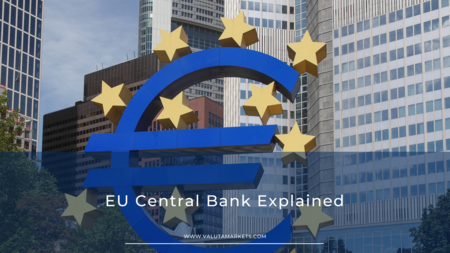The European Central Bank (ECB) is an institution of the EU and the European Union’s central bank. ECB oversees over 120 central banks and commercial banks in the EU member states, making it a vital central bank globally.
The ECB headquarters are in Frankfurt, Germany, and has been in charge of the monetary policy in the region for over two decades. The primary mandate of the European Central Bank is to maintain price stability in the Eurozone.
The European Central Bank Structure
ECB has four key decision-making bodies that are tasked with implementing its objectives.
1. Governing Council
The Governing Council is the main decision-making body, and it features national central bank managers and six members of the Executive Board of the banks in the Eurozone.
The Governing Council members have to evaluate their position in the monetary policy every two weeks.
The Governing Council’s primary responsibility is to develop a monetary policy for the member states. They thus make decisions on the interest rates, monetary objectives, and supply of assets held by monetary authorities and central banks in the region.
The President and the Vice-President of the European Central Bank must hold a press conference every six weeks to discuss their decisions on monetary policy. The council is also responsible for making decisions that will positively impact the functions and performance of the Eurosystem.
2. The Executive Board
The Executive Board consists of the President, Vice President, and four appointed members. The board governs the day-to-day operations of the European Central Bank and is also the regent of responsibilities assigned by the Governing Council.
3. General Council
The General Council is made up of the European Central Bank President, Vice-President, and Governers of the central banks of the Eurozone.
The primary responsibilities of the General Council are to coordinate operations and advisory. Some of the tasks assigned to the council include setting the exchange rates for taking up the Euro, setting the employment terms of the ECB staff members, preparation of ECB annual reports, and data collection.
4. The Supervisory Board
The Supervisory Board is made up of the chair, vice-chair, national supervisors’ representatives, and four European Central Bank representatives.
The board’s key responsibilities include proposing draft decisions and supporting the steering committee.
ECB Roles
The European Central Bank maintains the price stability of member states by developing monetary policies. It also monitors financial institutions to ensure compliance with regulations for smooth conduct.
ECB monitors international trade and the stability of the Euro in the global market. The ECB also controls the state of unemployment and inflation in the member states to ensure a smooth economy and formulates plans that will steer economic growth.
What Are the Objectives Of ECB?
The objectives of the European Central Bank include ensuring the price stability of the Euro by monitoring the region’s banking system and aiding the formulation of monetary policy.
By ensuring smooth business transactions, maintaining a balance of international trade, and a smooth economy, the institution ensures the preservation of purchasing power and economic growth.
The institution guides the member states in foreign exchange transactions and operations, gives operational guidelines, and ensures compliance.
How Does ECB Work?
The Governing Council of the European Central Bank ensures the banking systems of the member states are operating as per the issued guidelines.
The institution develops a monetary policy enriched by reviews and suggestions from the members after market surveys. Through inspection, audit, and reports, the states’ central banks ensure that the members are compliant with the policies set by the institution.
Every two weeks, a meeting is held to review and discuss reports from the members with details of compliance with internal rules and statutory and local laws.
Once the discussions are complete, the ECB shares a final report with the members. The reports highlight the members’ reviews, pointing out drawbacks in compliance with the guidelines and recommendations to improve.
The President and Vice-President then approve the final report.
The ECB works with all the national central banks from all the European Union member states and ensures cooperation between the central banks in the region. The Governing Council of the European Central Bank must work free from political influence.
The members of the Governing Council play a critical role in monetary policy decision-making through voting. Every member has one vote, and the council must act on majority votes on major monetary policy decisions.
Conclusion
The European Central Bank controls the operations of financial institutions of all 19 member states. The ECB was established to ensure the stability of the Euro, which is the currency used by all the member states. The ECB structure comprises councils that oversee monetary policy formulation and the compliance of set guidelines by banks in member states. Through compliance with the set guidelines, economic growth and good purchasing power are sustained.

